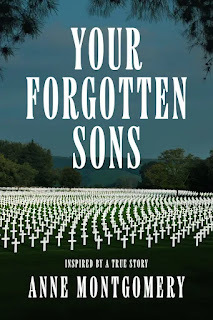C.D. Hersh's Blog, page 10
April 14, 2025
Tell Again Tuesday Website
As writers we need a presence on the internet. Some have chosen not to do a website because of the work to keep it going. Well this article might make it seem less intimidating.
How to Build a One-Page Website with WordPressBy Nick Schäferhoff
Not every website needs a ton of pages and posts. In fact, with a clear focus, a one-page website may be sufficient for many use cases.
If you don’t have much experience building websites, creating your own single-page website is relatively simple, even without coding skills or a big budget. In this post . . .
For the rest of the blog go to:April 10, 2025
Friday Feature An Agent Reads the Slush Pile
At a conference we attended several years ago, agent Kristin Nelson, President and Senior Literary agent of Nelson Literacy Agency, read a selection of two page openings from attendees’ books. We entered one, but didn’t get chosen. However, we gleaned a lot of good information from her workshop.
Here’s as quick rundown of the tips Kristen gave.
• Don’t retell what you’ve shown already
• Don’t start your opening with a dream sequence.
• Watch overdoing descriptions.
• Physical descriptions must be organic and important to the scene.
• Use the most powerful words you can.
• Beginning a story with bodily functions (ei vomiting) is a no no.
• Anchor your opening in physical space and time.
• Streams of consciousness are hard to follow, especially when they aren’t anchored in time and space.
• Everything in your first two pages has to count.
• Start with emotionally resonating stuff.
• Immerse the readers in what your character is feeling
• Watch the overwriting—less really is more.
While her critiques may have been disheartening to those writers who were read, she left us with this piece of advice: Where you are as a writer is not where you will be as a writer in six months.
If you go back and read some of your earlier writings and compare them to today, after you’ve practiced and studied the craft you’ll see just how true her statement is.
Are you guilty of any of these writing mistakes?
April 8, 2025
Wednesday Special Spotlight Writing
While this probably should have been shared on the first of this month we thought it’s still April so why not. Hope you get a laugh out of this.

10. When u lk at it u c something tht lks lke txt—I  u
u  .
.
9. there is no capitalization—anywhere.
7. The characters all laugh, comment and argue their dialogue, when a simple said would suffice.
8. There are no tags—dialogue, identifying, or action—on any dialogue.
6. The page blooms with purple prose and author intrusion.
5. There’s no white space on the page.
4. There are very very long run on sentences with very little punctuation in them to give the reader a break or clarify the meanings just a period at the end of the sentence and it looks a whole lot like this.
3. There is so, so, so, much punctuation, commas, semicolons, and, colons, on every line, and, or, every page, that, in a matter of only a few seconds of reading, you lose track of what’s being said, as well as your train of thought.
2. The word was appears 20 or more times on a page.
And the Number ONE way to recognize bad writing:
1. You didn’t write it.
SO what was the one that made you laugh the most? Let us know in the comments below so others can laugh as well.
April 7, 2025
Tell Again Tuesday Chocolate & Bananas
Cowgirls in the KitchenBy Jill Kemerer

Ready for another vintage recipe? This new segment feature recipes our mothers and grandmothers used to make. This month’s recipe? Banana Chocolate Chip Bars!
I love to cook, and I really love to bake. If I had my way, I’d bake fresh cinnamon rolls with cream cheese buttercream frosting every single weekend! Alas, my family is working on improving our health, and that means yummy frosting is a once-in-a-while indulgence instead of every Saturday. Bummer.
One of my favorite cake-like bars does not feature fluffy frosting, and it even has some fruit in it. Practically a healthy dessert, right? Okay, I wouldn’t go that far! My mom, aunts, and both grandmothers were always making banana bread, and this has a slight twist–mini-chocolate chips! These bars are delicious and very easy to make.
April 3, 2025
FRIDAY FEATURE BREAKING RULES CAN BE DEADLY

In a moment, the magnificent Sonoran Desert can become merciless, even deadly. I will never venture there again without following the rules.
In my YA novel The Scent of Rain, as in all my books, the beautiful but sometimes treacherous southwestern desert plays a part. I’ve lived in Phoenix, Arizona for over 25 years and I’d always believed that, in the event of a Zombie Apocalypse, I could manage to stay alive in the wilderness that butts up against our urban landscape. Years of Girl Scout camp, rock collecting in remote abandoned mines, and scuba diving in wild locales made me confident I could outwit the elements, if I found myself stuck in the middle of nowhere.
The key to survival is planning. Make rules and stick to them. As a sports official for over thirty-five years, I tend to be quite dedicated to rules. Still, one awful day, I committed the worst mistake imaginable. I broke my own rules: a decision that could have been fatal.
I was headed for a day of rock collecting in the Superstition Mountains. As always, I’d left a detailed map of where I planned to be and when to expect me home. Since finding a person in hundreds of square miles of mountainous wilderness is always a daunting task – especially when cellphone access is rarely available – the rule was that I would stay with the vehicle, which would be much easier to spot than a lone individual. My old Ford pickup was stocked with water and food, a sleeping bag, books to read, a tent, a bottle of tequila – to disinfect wounds, of course – and dog food. I traveled that day with Georgie, my aging sheltie collie, and a young spotted cattle-dog mix named Sadie.
Once off the two-lane road, I drove about a mile on a well-maintained dirt trail. But quickly, the ground became rocky and steep. A few twists and turns later, I stopped. The track was too rough. Unfortunately, I was between a rock wall and a small ledge leading into a sandy wash, so I couldn’t turn the truck around. I draped my arm over the passenger seat and started backing down the trail. Almost immediately, my rear tire slipped over the ledge, and the pickup slid into the wash. When I gunned the engine, the back tires sunk into the sand.
I swore loudly and jumped out, landing in a jumble of sharp rocks. My leg slipped into a crevice, and I fell, slicing my arm on a jagged boulder. Blood ran down to my elbow in bright red streaks. I swore some more.
I stared back in the direction of the road. I was only about a mile-and-a-half in. It would be a short hike on a cool, cloudy day. I could flag someone down and call home. I strapped two water bottles around my waist, grabbed some energy bars, reapplied my sunscreen, and squashed on my Aussie hat. I put the dogs’ leashes in my pack.
I walked on the sandy wash for a short time, admiring the rocky desert beauty: spindly ocotillos, majestic saguaros, and twisted mesquite trees dotted the landscape. The dogs bounded around me. Then I stopped. Two trails, right next to one another, led away from the wash. I thought for a moment. Which one had brought me here? I took the fork to the left. I can’t remember why.
Later that morning, I stood near the top of a small mountain. The dark, open face of an abandoned mine yawned at me. I’d taken the wrong trail. I turned and gazed out at the valley. With the exception of the massive Ray Copper Mine edging the horizon, I saw only wilderness. Where was the road?
Then, the sun came out, strong and hot. I squinted and saw what looked like a white roof way off to my left. We started down the trail, which forked again. This was a mining road, composed of jagged rocks. After about 30 minutes, Georgie stopped. My collie had cut her paws on the rough trail and sat down, refusing to budge. Both animals stared at me, tongues lolling out of their mouths. I reached again for the water bottles and was stunned that only about an inch of precious fluid remained.
The heat became stifling. I tried carrying Georgie, but she was too heavy. I looked for shade, knowing that we should wait out the heat and hike at night. But could we all survive on the little bit of water that remained? Death can come quickly in the desert.
Feeling sick to my stomach, I walked away from my girls. I’d leashed them to the meager shade of a scraggly bush, hoping to find help before dark. The coyotes would be out by then. Two tied dogs would have no chance against them.
I wiped tears from my face as I built cairns: trail markers that could lead me back. I’d had heat sickness before and recognized that I was beginning to succumb again to the light-headedness that precedes passing out. I finished the water.
Later, when I put my foot on a flat piece of pavement, I was stunned. The road simply appeared with no warning. Then, out of nowhere on that lonely stretch, a single car pulled up and stopped next to me. A young man, incongruously wearing a white button-down and tie, leaned out the window and asked if I needed help.
“You’re hurt,” he said looking at the dried blood on my arm.”
I cried.
The kind young man dropped me off at the Kearny sheriff’s office, where Mayberry-esq matrons in floral-print blouses fussed over me. “No, I don’t want a paramedic,” I assured them, red-faced, crying. “I want my dogs!”
Several hours later, Sheriff Joe Martinez drove his cruiser into the desert with me on the seat beside him. We followed the trail of stone markers. I worried about my girls and was afraid to look when he said, “There they are!”
To my relief, we were greeted with wagging tails. Later, Sheriff Martinez, in true western hero fashion, pulled my truck from the sand and waved me off.
Prior to my brush with disaster, I could sometimes be heard mocking ill-prepared visitors who would end up lost in the desert without food, water, sunscreen, or proper clothing: hikers who approached the desert environment like a walk in a pastoral garden.
I don’t do that anymore.
And I never, ever, break the rules.
 Here is a brief peek at Anne’s latest release.
Here is a brief peek at Anne’s latest release.
Bud Richardville is inducted into the Army as the United States prepares for the invasion of Europe in 1943. A chance comment has Bud assigned to the Graves Registration Service where his unit is tasked with locating, identifying, and burying the dead. Bud ships out, leaving behind his new wife, Lorraine, a mysterious woman who has stolen his heart but whose secretive nature and shadowy past leave many unanswered questions. When Bud and his men hit the beach at Normandy, they are immediately thrust into the horrors of what working in a graves unit entails. Bud is beaten down by the gruesome demands of his job and losses in his personal life, but then he meets Eva, an optimistic soul who despite the war can see a positive future. Will Eva’s love be enough to save him?
Praise for Your Forgotten Sons
“Although a defty crafted work of original fiction, “Your Forgotten Sons” by Anne Montgomery is inspired by a true story. An original and inherently interesting read from start to finish, “Your Forgotten Sons” will prove to be an immediate and enduringly appreciated pick.” Midwest Book Review
“This was a quick, riveting read that really challenged me to think differently about our servicemen and women, especially those who take on the jobs that don’t get heroically depicted in the media or news…I really highly recommend this book to anyone that is looking for a different take on American history. I left it with a newfound appreciation for the unsung heroes.” Bekah C NetGalley
“This is the truth. It’s gritty and painful and bittersweet – and true. When you think you’ve read every perspective of WWII, along comes Bud to break your heart.” Bridgett Siter Former Military Reporter
“Anne Montgomery writes a strong story and I was hooked from the first page. It had a great concept and I enjoyed that this was inspired by a true story…It was written perfectly and I was invested in the story. Anne Montgomery has a great writing style and left me wanting to read more.” – Kathryn McLeer NetGalley
Available at Amazon, Apple Books, Barnes & Noble, Google Books, and Kobo
Anne Montgomery has worked as a television sportscaster, newspaper and magazine writer, teacher, amateur baseball umpire, and high school football referee. She worked at WRBL‐TV in Columbus, Georgia, WROC‐TV in Rochester, New York, KTSP‐TV in Phoenix, Arizona, ESPN in Bristol, Connecticut, where she anchored the Emmy and ACE award‐winning SportsCenter, and ASPN-TV as the studio host for the NBA’s Phoenix Suns. Montgomery has been a freelance and staff writer for six publications, writing sports, features, movie reviews, and archeological pieces.
When she can, Anne indulges in her passions: rock collecting, scuba diving, football refereeing, and playing her guitar.
Learn more about Anne Montgomery on her website and Wikipedia. Stay connected on Facebook, Linkedin, and Twitter.
April 1, 2025
Wednesday Special Spotlight Pareidolia
I learned a new word the other day—pareidolia (parr-i-DOH-lee-ə).
Pareidolia means to see meaning where there is none. It is also defined as the tendency to interpret a vague stimulus as something known to the observer. The Skeptic’s Dictionary defines it as a type of illusion or misperception involving a vague or obscure stimulus being perceived as something clear and distinct. In other words, we see something, hear something, or smell something where there really isn’t anything.
I don’t know about you, but I’ve been experiencing pareidolia all my life, in more ways than one. I’ve often inserted meaning into conversations with people who made absolutely innocent statements than I’ve taken umbrage to. I’ve interpreted vague stimuli as clear, distinct invitations to do something when the person I was talking to had no intention of going in that direction.
I have frequently been guilty of the more appropriate definition of the word whenever I see objects in the clouds,

Shark or Submarine
in the swirls in the linoleum

What do you see?
photo by C.D. Hersh
in shadows on the walls

spooky shadow face
photo by C.D. Hersh
I can clearly see the man in the moon face, the faces on the surface on Mars,
and the Horsehead Nebula in the NASA pictures
I hear the phone ringing in the shower, when it’s not ringing. I smell things on the air when no one else does, (and have on several occasions known what my mother was fixing for dinner because I smelled it a mile away) and yes, I’ve heard the hidden words in In A Gadda Da Vida played backwards.
Skeptics would say our brains are wired to see faces and that’s why we see them where none really exist—there’s really nothing there but random patterns. But I rather like the other, more mysterious approach to pareidolia—the one that leaves me with goosebumps, averting my eyes from the devil in the door, and whooping out a big OOOOHHH whenever I see something unexpected on my burned toast or staring at me from the electrical plug on the kitchen wall.
Skeptics believe the misty faces peering over the shoulders of people in dimly lit photos are just random shapes, not real faces—or maybe I should say dead, spooky faces people claim them to be. Because I can see them so clearly they might claim I have an overactive imagination, but that’s okay too. I revel in that imagination. It’s what makes me a writer. It keeps life interesting, and it gives me something to do when I’m staring for hours at watermarks in the ceiling at the doctors’ offices.
I’m never bored if there’s a random pattern somewhere in my sight line. I’m always searching for that illusive picture. And who knows … I might see something someday that inspires a new story. After all, what is writing but the sparking of a vague, obscure stimulus into something that’s clear and distinct?
Here’s a few pareidolia pictures you might enjoy. Do you have one of your own favorites?

photo (c) C.D. Hersh
Dragon attacking the Disney World Epcot World Ball

Apache head in rocks

Tree hugger

Screaming face
March 31, 2025
Tell Again Tuesday Visceral Writing
The Touch (and Taste, and Feel) of InspirationBy Sophie Masson

When it comes to creating a believable setting or background for a work of fiction, sensory inspirations are very important. Writers need to evoke a world in the reader’s mind which doesn’t just involve the visual and the auditory, but also hopefully bring the other senses into play—touch, smell, taste. It’s always been important to me, as I’m sure it is for many other writers, to experience the . . .
For the rest of the blog go to:March 27, 2025
Friday Feature Pens, Paper and Pennants
[image error]
Yesterday was baseball’s Opening Day in Cincinnati, Ohio, and if you are a baseball fan living in Cincinnati as we do, it is a big deal—so big in fact that school children get a free pass from classes to go see the three hour parade and the game. Some fans even take off work and head for the ballpark. At our house the traditional Opening Day meal is brats, mettwursts, baked beans, chips, and applesauce, parked on a TV tray and eaten in anticipation of the Reds hitting their way to their first win. The first game of the year holds out the promise of things to come, as everyone dreams that this will be the year the Reds will win big, like the Big Red Machine of the 70’s.
Ah yes hope in the spring.
We find the comparison between baseball and writing a book interesting. Spring training, for baseball, is putting the pieces together, deciding who is on the team, trying players out on the field to see how they work together, testing their skills, and a lot of practice to make the team mesh. The writer’s spring training is not much different. During writing spring training you are figuring out the back story of your book and the players, testing scenes to see how they work, asking the “What if we do this?” questions. You’re putting time and effort into creating a strong structure for your characters to play in.
Opening Day is the beginning of the real work. No more playing around, no more practicing. It’s do or die now. In baseball, Opening Day is the first of 162 games to determine the champion of the league. For writers, it’s the opening chapter—maybe not of a 162 chapter book, unless you’re writing the next “War and Peace.” A lot hinges on Opening Day. If the team loses, their momentum suffers. If you, as a writer, don’t come on strong, potential editors and agents will write you off.
Throughout the season your team will win and lose—it’s what keeps the game interesting. They will have successes, setbacks, rain delays, losing streaks, and injuries. These baseball players’ dilemmas parallel the problems, obstacles and successes our book characters face as they try to accomplish their goals. A baseball season where a team runs away with all the games can get boring fast—as witnessed by the mass exits at the stadiums when you have 19 to 0 scores. They same thing holds true for your book. If your characters aren’t facing some challenges, getting the socks beaten off them—and winning … sometimes—you won’t keep your readers engaged.
If your team is good, and sometimes lucky, as the season winds down to the end they will win the league championship. Big celebration! Lots of news coverage. The bulk of the work is behind the team now. They’ve accomplished the first round of the season’s goal. For writers this is the big moment when your book is complete. You’ve revised, revised, and revised, and made sure all the characters have done their best to get you to the finish. You’ve typed those last words, THE END.
Even though you’ve typed THE END, it doesn’t mean your work is finished. Like the league champions, you have more to do. You’re headed into the Division, League, and World Series playoffs. Baseball players don’t let up now. They work even harder to make sure they can ride the wave of success to the end. Finishing your book is only part of the game. Now you must work to get recognized by agents and publishers. If all goes well, you make it to publication, just like winning writers J.K Rowling, Stephanie Meyers, and Stephen King.
This year, like all the rest, we’re hoping the Reds get to the World Series, and we—especially Donald, will be following them all the way.
If you aren’t watching baseball today, then we hope you’re at your computers striving toward your own Writer’s World Series. Good luck to all of you.
Where are you today? Are you glued to the television watching fouls, strikes, and hopefully homeruns, or to your computer watching words whiz by?
March 25, 2025
Wednesday Special Spotlight Story Ideas
 People frequently ask how and where we got our ideas to write one story let alone a series.
People frequently ask how and where we got our ideas to write one story let alone a series.
Our collaborative writing journey started when our drama director asked us to write a play for the upcoming Christmas project the church was planning. That project turned out to be an interactive, walk-through drama with over one hundred characters. From that we did some skits and even have a couple of plays, radio shows and musical dramas WIPs. We really got to doing romance novels because of one Catherine gave to Donald. As he read it, he said no man would act like or say what that character said. He said we could do better, so we started looking for ideas.
The catalyst for the series happened during a trip, where we often plot to pass the time. We were reading road signs, brainstorming book ideas. We came up with several book ideas, but the one that caught our interest came from a road sign in New York State pointing to a place called Turning Stone. That idea just took off for us.
As we developed the book concept, we decided that we wanted something different than the normal were-shape shifters. In reality, we can thank Donald’s psychology courses for the idea of the various forms of shifting. One of the psyche theories is that we all have three parts to our psyche, commonly called id, ego and super-ego. We added a twist to that theory using male, female, and animal egos, and a magic ring that could tap the various forms.
So how do we find ideas that allow our imaginations to run rampant? Ask, “What if?” of something you’ve just seen or heard. Many times, ideas come from commercials on television or just a snippet of conversation you hear in the grocery store or mall. Our newest book series coming out in the spring is based on one our travels where we stayed at a haunted B&B. The room we stayed in freaked Catherine out. She refused to raise her eyes from the floor and learned the next morning that the room had a ghost. You just never know what is going to spark an idea when you ask, “What if?”
Do you have any “What ifs?”
March 24, 2025
Tell Again Tuesday Rules for Writing
12½ Writing RulesBy Joanne Guidoccio

If you’re stuck and need a few writing rules . . .
For the rest of the blog go to:



